Survival horror is a subgenre of horror games. Although combat can be part of the gameplay, the player is made to feel less in control than in typical action games through limited ammunition or weapons, health, speed, and vision, or through various obstructions of the player's interaction with the game mechanics. The player is also challenged to find items that unlock the path to new areas and solve puzzles to proceed in the game. Games make use of strong horror themes, such as dark mazelike environments and unexpected attacks from enemies.
Silent Hill is a horror anthology media franchise centered on a series of survival horror games created by Keiichiro Toyama and published by Konami. The first four video games in the series, Silent Hill, Silent Hill 2, Silent Hill 3, and Silent Hill 4: The Room, were developed by an internal group called Team Silent, a development staff within former Konami subsidiary Konami Computer Entertainment Tokyo.
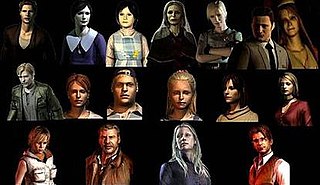
The survival horror video games series Silent Hill features a large cast of characters. The games' player characters are "everymen", in contrast to action-oriented survival horror video game series featuring combat-trained player characters, such as Resident Evil. The games are set in the series' eponymous fictional American town.
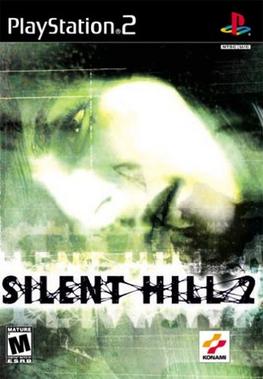
Silent Hill 2 is a 2001 survival horror game developed by Team Silent, a group in Konami Computer Entertainment Tokyo, and published by Konami. The game was released from September to November, originally for the PlayStation 2. The second installment in the Silent Hill series, Silent Hill 2 centers on James Sunderland, a widower who journeys to the town of Silent Hill after receiving a letter from his dead wife. An extended version containing a bonus scenario, Born from a Wish, and other additions was published for Xbox in December of the same year. In 2002, it was ported to Microsoft Windows and re-released for the PlayStation 2 as a Greatest Hits version, which includes all bonus content from the Xbox port. A remastered high-definition version was released for the PlayStation 3 and Xbox 360 in 2012 as part of the Silent Hill HD Collection.

Pyramid Head, also known as "Red Pyramid", "Red Pyramid Thing", or "Triangle Head" is a character from the Silent Hill series, a survival horror video game series created by Japanese company Konami.
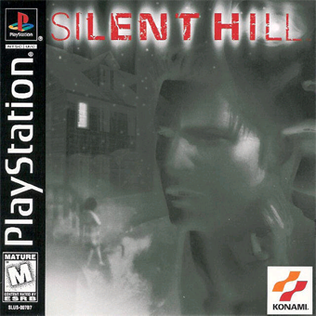
Silent Hill is a 1999 survival horror game developed by Team Silent, a group in Konami Computer Entertainment Tokyo and published by Konami. The first installment in the video game series Silent Hill, the game was released exclusively for the PlayStation. Silent Hill uses a third-person view, with real-time rendering of 3D environments. To mitigate limitations of the console hardware, developers used fog and darkness to muddle the graphics and the pop-ins, which in return helped set up the atmosphere and mystery of the game. Unlike earlier survival horror games that focused on protagonists with combat training, the player character of Silent Hill is an "everyman".

Silent Hill 3 is a 2003 survival horror game developed by Team Silent, a group in Konami Computer Entertainment Tokyo, and published by Konami. The game was released from May to August, originally for the PlayStation 2. The third installment in the Silent Hill series and a direct sequel to the first Silent Hill game, it follows Heather, a teenager who becomes entangled in the machinations of the town's cult, which seeks to revive a malevolent deity. A port for Microsoft Windows was released later in November, and a remastered high-definition version was released as part of the Silent Hill HD Collection, for the PlayStation 3 and Xbox 360 in 2012.

Silent Hill 4: The Room is a 2004 survival horror game developed by Team Silent, a group in Konami Computer Entertainment Tokyo, and published by Konami. The fourth installment in the Silent Hill series, the game was released in Japan in June and in North America and Europe in September. Silent Hill 4 was released for the PlayStation 2, Xbox, and Microsoft Windows. Its soundtrack was released at the same time. In 2012, it was released on the Japanese PlayStation Network. On October 2, 2020, it was re-released on GOG.com with patches to make it playable on Windows 10.

Silent Hill: Homecoming is a 2008 survival horror game developed by Double Helix Games and published by Konami Digital Entertainment. The sixth installment in the Silent Hill series, Homecoming follows the journey of Alex Shepherd, a soldier returning from war, to his hometown of Shepherd's Glen, where he finds the town in disarray, and his younger brother missing. As he continues on his search to find his younger brother, he discovers more about the Order, a cult, as well as the town's history, and his own past.
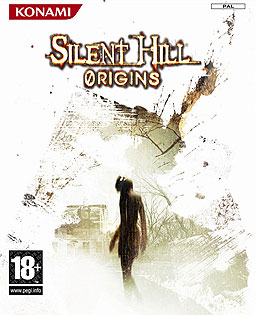
Silent Hill: Origins is a 2007 survival horror game developed by Climax Action and published by Konami Digital Entertainment. It was released worldwide in late 2007 for the PlayStation Portable, beginning in early November with the United Kingdom. A port for the PlayStation 2 was released worldwide in early 2008, beginning in March with North America. The fifth installment in the Silent Hill series, Origins is a prequel to the first game (1999). Set in the series' eponymous, fictional American town, Origins follows trucker Travis Grady as he searches for information about a girl whom he rescued from a fire. Along the way, he unlocks his repressed childhood memories. Gameplay uses a third-person perspective, and emphasizes combat, exploration, and puzzle-solving, similar to the previous installments.
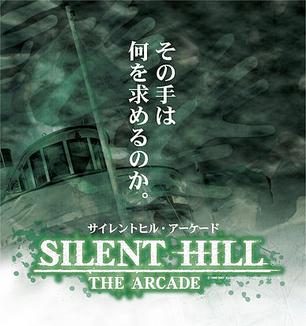
Silent Hill: The Arcade is an arcade game spin-off of the survival horror video game series Silent Hill developed and published by Konami. The Arcade was first revealed at the 2007 Japan Arcade Operator's Union trade show by Konami.

The Sword of Etheria is an action role-playing game developed and published by Konami Computer Entertainment Tokyo. It was originally released on June 30, 2005 for PlayStation 2 as OZ in Japan, and as Chains of Power in Korea, followed by its release in Europe on February 24, 2006. The game was not released in North America. It was reprinted in Japan on January 26, 2006 as part of the "Konami the Best" budget label.

Silent Hill: Shattered Memories is a 2009 survival horror game developed by Climax Studios and published by Konami Digital Entertainment. It was released in December for the Wii and ported to the PlayStation 2 and PlayStation Portable platforms in January 2010. In April 2014, it appeared on the PlayStation Network in Europe.

Silent Hill: The Escape is a 2007 first-person shooter game developed by Konami Digital Entertainment and published by Konami for mobile phones.

Silent Hill: Downpour is a 2012 survival horror game developed by Vatra Games and published by Konami. Downpour is set in the series' eponymous fictitious American town and centers on Murphy Pendleton, a prisoner who enters the town, periodically entering the otherworld, leading him to unlock repressed memories. The game uses a third-person view and can be played in 3D. It was released in March 2012.
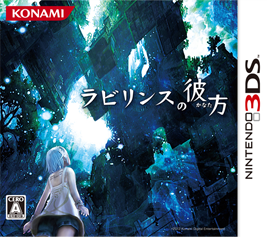
Beyond the Labyrinth is a dungeon crawler role-playing video game developed by tri-Ace and published by Konami for the Nintendo 3DS handheld video game console. The game revolves around a group of players who have begun playing an online multiplayer game, only to find themselves thrust into a world completely different from theirs. They encounter a girl who has become trapped in this world's Labyrinth, and the two parties must work together to find a way out.

Silent Hill HD Collection is a 2012 video game compilation of remastered video game ports of Silent Hill 2 (2001) and Silent Hill 3 (2003) developed by Hijinx Studios for the PlayStation 3 and Xbox 360 consoles. Silent Hill 2 centers on widower James Sunderland who travels to the titular town after receiving a letter from his dead wife, while Silent Hill 3 is a direct sequel to the first Silent Hill game and focuses on Heather Mason, a teenager who finds herself in conflict with the town's cult. Both games are categorized as survival horror and share gameplay elements with each other. Published worldwide by Konami beginning with North America in March 2012, the compilation features a graphics overhaul, new voice acting, and Xbox achievements and PlayStation trophies.

Silent Hills is a cancelled horror game developed by Kojima Productions that was to be published by Konami for the PlayStation 4. It was in development since 2012 until its cancellation in 2015. It was to be the ninth main installment in the Silent Hill series and was to be directed by Hideo Kojima and Guillermo del Toro.
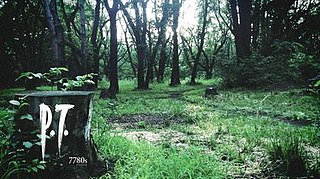
P.T. is a 2014 psychological horror game developed by Kojima Productions under the pseudonym "7780s Studio" and published by Konami. It was directed and designed by Hideo Kojima in collaboration with filmmaker Guillermo del Toro, and was released for free on the PlayStation 4.

Moero Crystal, full name Genkai Tokki Moero Crystal, is a 2015 dungeon crawler role-playing video game developed by Compile Heart for the PlayStation Vita. It is the third game in the Genkai Tokki series, following Monster Monpiece and Moe Chronicle, and preceding Genkai Tokki: Seven Pirates. Like the other games, Moero Crystal places emphasis on ecchi and fanservice content, and follows protagonist and "lucky lecher" Zenox as he searches for monster girl bras in order to "save the world". The game was released on September 25, 2015 in Japan and in greater Asia with Chinese subtitles in 2016. The game was released as Moero Crystal H for the Nintendo Switch on September 5, 2019 in Japan and worldwide in September 2020.



















